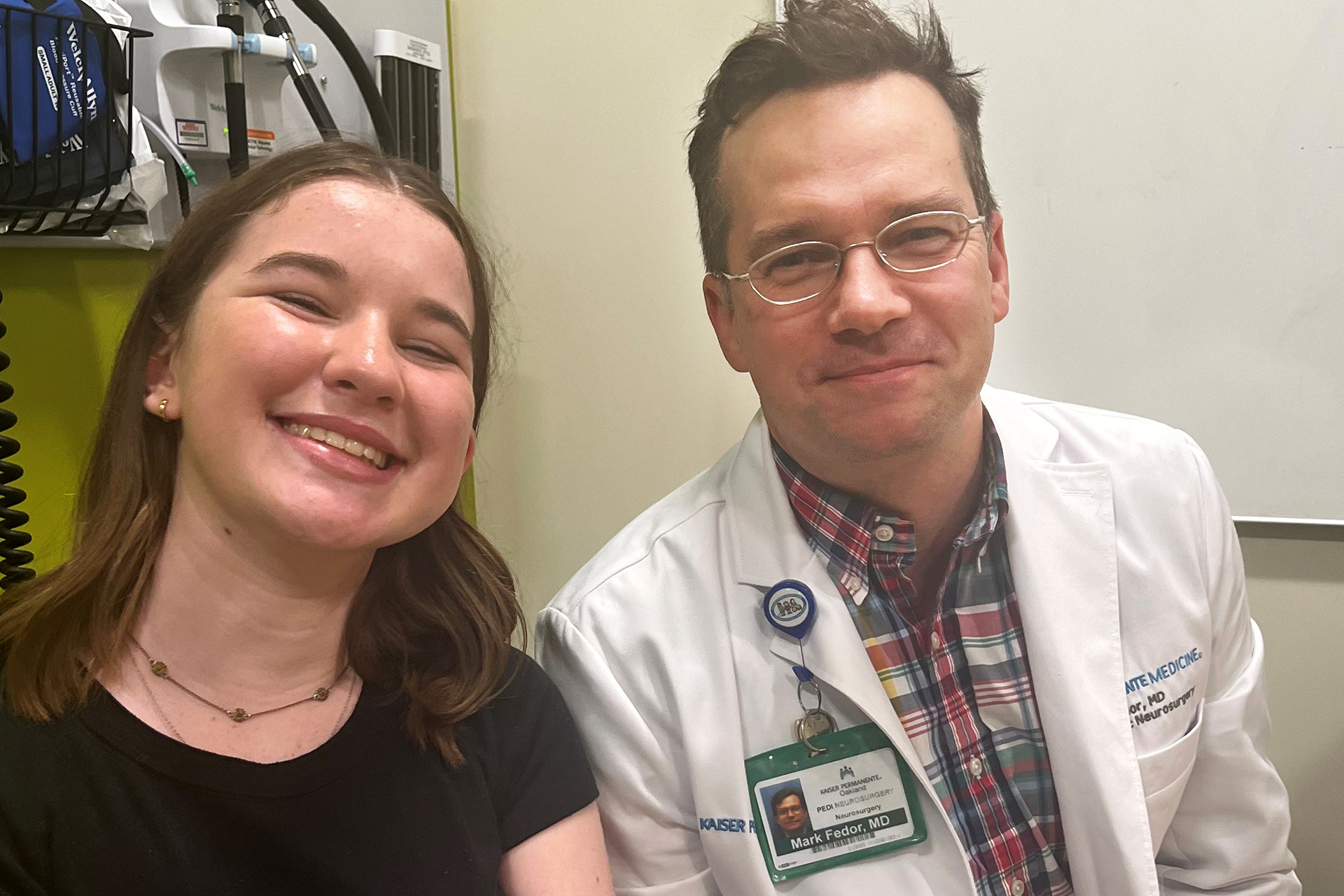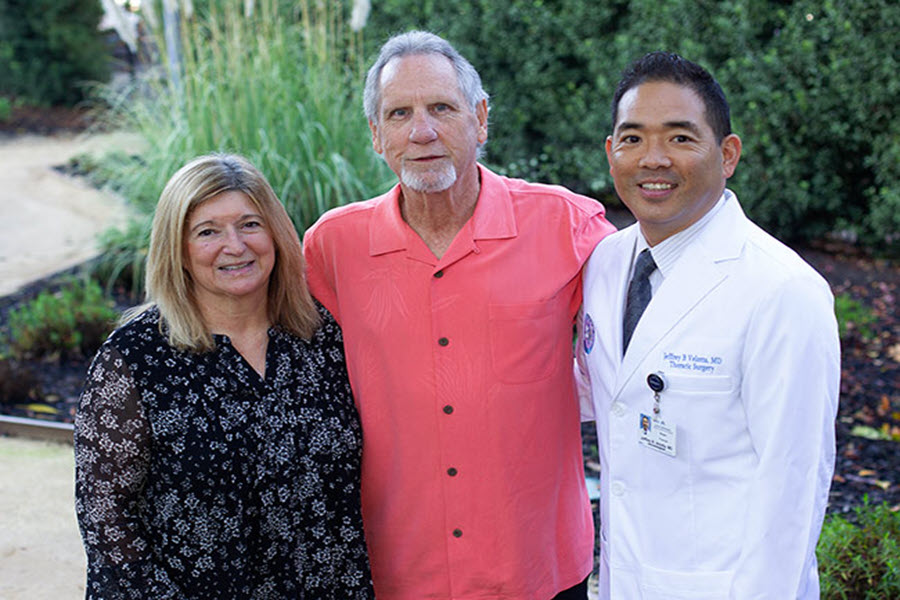Pictured, Linda Adams poses with her dialysis case manager Ritchie Nabong-Salem, RN, and her nephrologist Sijie Zheng, MD.
Inside KP-March 7, 2018
Two years ago, Linda Adams faced an important choice.
After struggling with high blood pressure and diabetes for decades, the 66-year-old retired accountant learned that her kidneys were failing and she would need to find a new way to filter waste and extra fluid from her blood.
Adams is a Kaiser Permanente member in Northern California and 1 of more than 660,000 people across the country with end-stage kidney disease. Each year about 17,000 patients receive a kidney transplant nationally, but there are not nearly enough kidney donors currently to go around. Most end-stage kidney disease patients start dialysis, and nearly 90 percent of them start with hemodialysis in a hemodialysis center, where they typically spend 3 to 4 hours — 3 days a week.
Linda Adams chose instead to do in-home peritoneal dialysis, a therapy that uses the lining of her belly (called the peritoneal membrane) to filter her body’s waste. Adams received more than 40 hours of training to do peritoneal dialysis in her home, and she can call or email a nurse any time she needs support.
She starts the treatment before she goes to sleep every night, attaching a catheter that was surgically implanted in her belly to a machine that’s the size of a small suitcase. The machine fills the space in her belly with dialysis fluid and then later drains the fluid along with extra fluid and waste from her body a few hours later. The process is repeated a few times, and the entire therapy takes 10 to 12 hours.
“I feel thankful that I have this option,” Adams said. “With the support of my family, I’m able to do this therapy at home each day, live a more active, normal life, and I feel great.”
Good Outcomes for an Expanded Population
Last year, 24 percent of Kaiser Permanente Northern California kidney failure patients used peritoneal dialysis compared to 12 percent of kidney failure patients nationwide.
The Kaiser Permanente Division of Research will be publishing results in the coming months on the clinical effectiveness of the therapy.
“When it comes to survival and avoiding certain complications, our research is showing that outcomes are at least as good or better for people starting peritoneal dialysis when compared to those starting hemodialysis,” said Alan Go, director of the Comprehensive Clinical Research Unit. “We’re able to show these results even when we’ve expanded peritoneal dialysis to a relatively large population.”
Leonid Pravoverov, MD, medical director for Kaiser Permanente Northern California End-Stage Renal Disease Contracted Services, said that population now includes patients who might not have been considered good candidates for the treatment 10 years ago.
“We’ve expanded our program to include older and sicker patients, including those with advanced heart failure because they don’t do well with the stress of hemodialysis,” Dr. Pravoverov said.
Dr. Pravoverov added that peritoneal dialysis also uses 20 to 30 percent less health care resources than hemodialysis.
Family Support Plus Coordinated Care
Linda Adams’ Kaiser Permanente nephrologist, Sijie Zheng, MD, said home peritoneal dialysis works best for patients who have strong family support and are able to take charge of their own health. He explained how peritoneal dialysis is easier on the body then hemodialysis.
“Most people on hemodialysis don’t feel well after treatment because hemodialysis must accomplish a lot in a short period of time, and that’s hard on the body,” Dr. Zheng said. “Peritoneal dialysis is slower, gentler, and more like what the kidney does.”
Kaiser Permanente Northern California offers peritoneal dialysis for kidney failure patients at each of its 21 medical centers. Tracy Jonelis, MD, Chair of Nephrology for The Permanente Medical Group, said that’s possible because Kaiser Permanente is committed to making this a viable option for its patients and it has the integrated structure to support the coordinated care it requires.
“Because we believe this therapy is good for our patients, we’re motivated to have our primary care physicians, nephrologists, nurses, social workers, dietitians, interventional radiologists, and surgeons all working together to not only provide this care but to continually improve it.”
This article originally appeared in Inside KP






